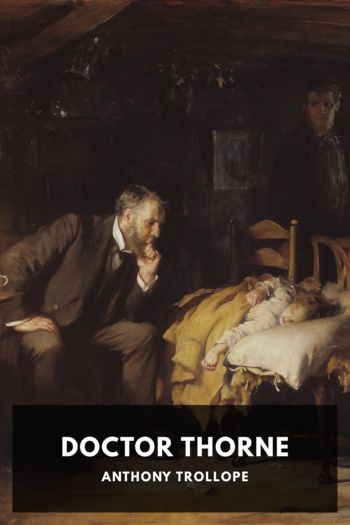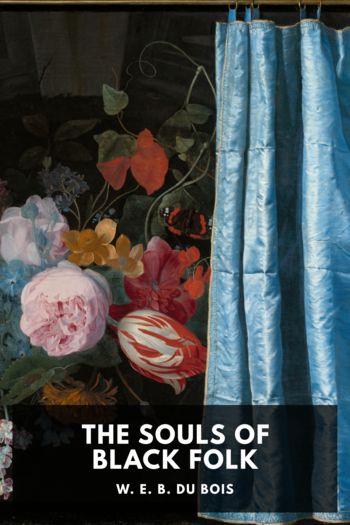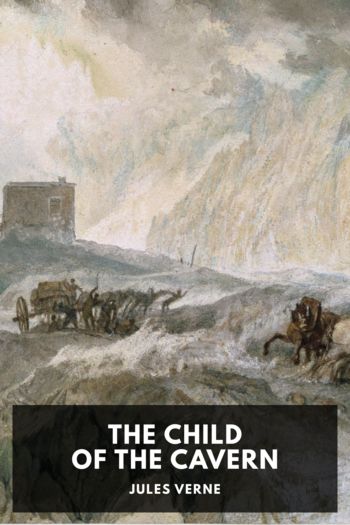Genre Other. Page - 275

Description
Doctor Thorne is the third book in Trollope’s “Chronicles of Barsetshire” series, which is set in the fictional county of Barsetshire, somewhere in England’s West Country. Unlike the two earlier novels in the series, Doctor Thorne isn’t set in the cathedral city of Barchester, but in the small village of Greshamsbury and the estate of the local squire, Greshamsbury Park.
Doctor Thorne is a middle-aged medical practitioner in Greshamsbury, a friend of the local squire Mr. Gresham, who is deeply in debt because of ill-advised attempts to gain a seat in Parliament. Doctor Thorne not only provides medical advice to the Greshams, but also assists Mr. Gresham in obtaining financial loans from a local self-made entrepreneur, Sir Richard Scratcherd. When Mr. Gresham’s son Frank comes of age, it is impressed on the young man that he must “marry money” to overcome the debts of the estate.
Doctor Thorne is regarded highly among Trollope’s works, with one prominent critic, Michael Sadleir, writing in 1927 of “the sensational perfection of Doctor Thorne.”
A television adaptation of the book was produced by ITV and aired in March 2016, with a script written by Julian Fellowes, the writer of Gosford Park and Downton Abbey

Description
When it was first published in 1903, W. E. B Du Bois’s The Souls of Black Folk represented a seismic shift in the discussion of race in the United States. Earlier African-American authors had broken ground with memoirs and autobiographical novels—narrative works that portrayed the African-American experience through the stories of particular individuals. What Du Bois envisioned was a work that portrayed the experience of African Americans as a people.
As a professor of sociology, Du Bois naturally gravitated toward a scientific and scholarly approach. But he was also becoming, to his own surprise, a political activist, and found himself increasingly disenchanted with purely intellectual arguments when his fellow African Americans were being lynched, starved, and driven from their land. What emerged from this tension between scholarly rigor and righteous indignation was a book that became a seminal text for both sociology and for the civil rights movement.
The fourteen essays in this book weave together historical research, sociological analysis, first-hand reportage, political argument, and an enduring, aspirational belief in the possibility of America. Many of the ideas that Du Bois introduced in the book have become mainstays of modern discourse, including the “veil of race” and the concept of double consciousness. These insights, originally rooted in race, have proven resonant to a wide range of other marginalized groups and have provided a useful framework for understanding the nature of oppression and the path to liberation.

Description
Henry VIII is one of the few of Shakespeare’s plays thought to have been written with a collaborator. It was initially published in the First Folio under Shakespeare’s name only, but in 1850 James Spedding, an English author and expert on the works of Francis Bacon, suggested that the play was a collaboration with John Fletcher, a playwright who later replaced Shakespeare in the King’s Men acting company. Modern scholars mostly tend to agree, though the theory is still controversial as it’s based on textual analysis and not any historical mention of a collaboration. The play is also famous for having burned down the Globe Theatre in 1613 during one of its early performances, when a cannon shot special effect lit the theater’s thatched roof on fire.
In the play, King Henry’s closest advisor, Cardinal Wolsey, is hated by the citizens of England. Wolsey has imposed unfair taxes and unpopularly executed the Duke of Buckingham for treason. While at a party, the King falls madly in love with Anne Bullen and plans to divorce his current wife, Katherine of Aragon. Wolsey is asked to help his King in this endeavor, all the while becoming even more hated by the English and their Queen.
This Standard Ebooks production is based on William George Clark and William Aldis Wright’s 1887 Victoria edition, which is taken from the Globe edition.

Description
Resurrection, the last full-length novel written by Leo Tolstoy, was published in 1899 after ten years in the making. A humanitarian cause—the pacifist Doukhobor sect, persecuted by the Russian government, needed funds to emigrate to Canada—prompted Tolstoy to finish the novel and dedicate its ensuing revenues to alleviate their plight. Ultimately, Tolstoy’s actions were credited with helping hundreds of Doukhobors emigrate to Canada.
The novel centers on the relationship between Nekhlúdoff, a Russian landlord, and Máslova, a prostitute whose life took a turn for the worse after Nekhlúdoff wronged her ten years prior to the novel’s events. After Nekhlúdoff happens to sit in the jury for a trial in which Máslova is accused of poisoning a merchant, Nekhlúdoff begins to understand the harm he has inflicted upon Máslova—and the harm that the Russian state and society inflicts upon the poor and marginalized—as he embarks on a quest to alleviate Máslova’s suffering.
Nekhlúdoff’s process of spiritual awakening in Resurrection serves as a framing for many of the novel’s religious and political themes, such as the hypocrisy of State Christianity and the injustice of the penal system, which were also the subject of Tolstoy’s nonfiction treatise on Christian anarchism, The Kingdom of God Is Within You. The novel also explores the “single tax” economic theory propounded by the American economist Henry George, which drives a major subplot in the novel concerning the management of Nekhlúdoff’s estates.

Description
In search of an occupation after the end of the Civil War, the Baltimore Gun Club undertakes the design and construction of a cannon capable of launching a projectile to the Moon. The three main protagonists—Impey Barbicane, president of the Gun Club, Captain Nicholl, Barbicane’s rival and then collaborator, and Michel Ardan, a French scientist—board the hollow cannonball en route to the Moon. The story concludes in Autour de la Lune, the sequel published four years later.
De la Terre à la Lune, number 4 in the Voyages Extraordinaires collection, is one of Jules Verne’s best-known novels. It inspired numerous adaptations, from movies to theme parks to video games.

Description
The Child of the Cavern follows engineer James Starr as he receives a letter from an old friend and co-worker, Simon Ford, requesting that he revisit a depleted coal mine in Scotland that he used to manage. Upon arriving, Starr finds the entire Ford family living in the mine, and Ford explains that a new coal vein has been located. Soon after Starr’s return, however, strange events start to occur, which seem to be supernatural. After a startling discovery, the characters continue to investigate these occurrences over the course of several years.

Description
Grub Street is the name of a former street in London synonymous with pulp writers and low-quality publishers. New Grub Street takes its name from that old street, as it follows the lives and endeavors of a group of writers active in the literary scene of 1880s London.
Edwin Reardon is a quiet and intelligent writer whose artistic sensibilities are the opposite of what the London public wants to read. He’s forced to write long, joyless novels that he thinks pop publishers will want to buy. These novels are draining to write, yet result in meager sales; soon Edwin’s increasingly small bank account, and his stubborn pride, start to put a strain on his once-happy marriage.
His best friend, Biffen, lies to one side of Edwin’s nature: as another highly-educated writer, he accepts a dingy, lonely, and hungry life of abject poverty in exchange for being able to produce a novel that’s true to his artistic desires but is unlikely to sell. On the other side lies Jasper Milvain, an “alarmingly modern” writer laser-focused on earning as much money as possible no matter what he’s made to write, as he floats through the same literary circles that Edwin haunts.
The intricately-told tale follows these writers as their differing outlooks and their fluctuating ranks in society affect them and the people around them. Gissing, himself a prolific writer intimately familiar with the London literary scene, draws from his own life in laying out the characters and events in the novel. He carefully elaborates the fragile social fabric of the literary world, its paupers and its barons both equal in the industry but unequal in public life. Though the novel is about writers on the face, the deep thread that runs through it all is the brutality of the modern social structure, where the greedy and superficial are rewarded with stability and riches, while the delicate and thoughtful are condemned to live on the margins of respectable society in grimy poverty, robbed not only of dignity, but of love.

Description
Peter Kropotkin initially published the chapters of Mutual Aid as individual essays in the intellectual periodical The Nineteenth Century over the course of six years. In 1902 the essays were published as a book.
In it, Kropotkin explores the role of mutually-beneficial cooperation across both animal and human societies. He begins by outlining how animals, both within and across species, thrive not through individual fitness, but rather through mutual cooperation. He then extends the breadth of his study to ancient human societies across generations and nations, until arriving at modern society, which he suggests has largely dispensed with the ancient benefits of mutual aid in favor of private property, capitalism, and social Darwinism.
Though more of a philosophical work than a scientific work, many of Kropotkin’s observations of the animal kingdom are considered to be scientifically accurate today, with Douglas H. Boucher calling Mutual Aid a precursor to the theory of biological altruism.
As a philosophical work Mutual Aid, along with his other work The Conquest of Bread, is recognized as a foundational text of the anarcho-communist political philosophy.

Description
Ray Bradbury is a giant of science fiction and fantasy. His childlike imagination, yearning for Mars, and love of all that is scary, horrible, and mysterious, reverberate throughout modern speculative fiction and our culture as a whole.
He has received countless awards including the Sir Arthur Clark Award, the World Fantasy Award for Life Achievement, an Emmy Award, and a National Medal of Arts. Along with terrestrial honorary street names, there are many extraterrestrial locations named in Bradbury’s honor such as Bradbury Landing, the landing site of the Mars Curiosity rover.
Some of his first published stories appear in Futuria Fantasia, a fanzine he created when he was 18 years old. All of his stories published in Futuria Fantasia are included in this collection. This collection also includes stories written well into his career, like “Zero Hour,” a story that was later republished in his famous collection The Illustrated Man.

Description
Little Dorrit, like many of Charles Dickens’ novels, was originally published in serial form over a period of about 18 months, before appearing in book form in 1857.
The novel focuses on the experiences of its protagonist Arthur Clenham, who has spent some twenty years in China helping his father run the family business there. After his father dies, Arthur returns home to London. His mother gives him little in the way of welcome. She is a cold, bitter woman who has brought Arthur up under a strict religious regime concentrating on the punitive aspects of the Old Testament. Despite this upbringing, or perhaps in reaction to it, Arthur is a kind, considerate man. He is intrigued by a slight young woman he encounters working as a part-time seamstress for his mother, whom his mother calls simply “Little Dorrit.” Arthur senses some mystery about her mother’s employment of Little Dorrit, and proceeds to investigate.
There are several subplots and a whole host of characters. Compared to some of Dickens’ work, Little Dorrit features a good deal of intrigue and tension. There are also some strong strands of humor, in the form of the fictional “Circumlocution Office,” whose sole remit is “How Not To Do It,” and which stands in the way of any improvement of British life. Also very amusing are the rambling speeches of Flora, a woman with whom Arthur was enamored before he left for China, but whose shallowness he now perceives only too well.
Little Dorrit has been adapted for the screen many times, and by the BBC in 2010 in a limited television series which featured Claire Foy as Little Dorrit, Matthew Macfayden as Arthur Clenham, and Andy Serkis as the villain Rigaud.